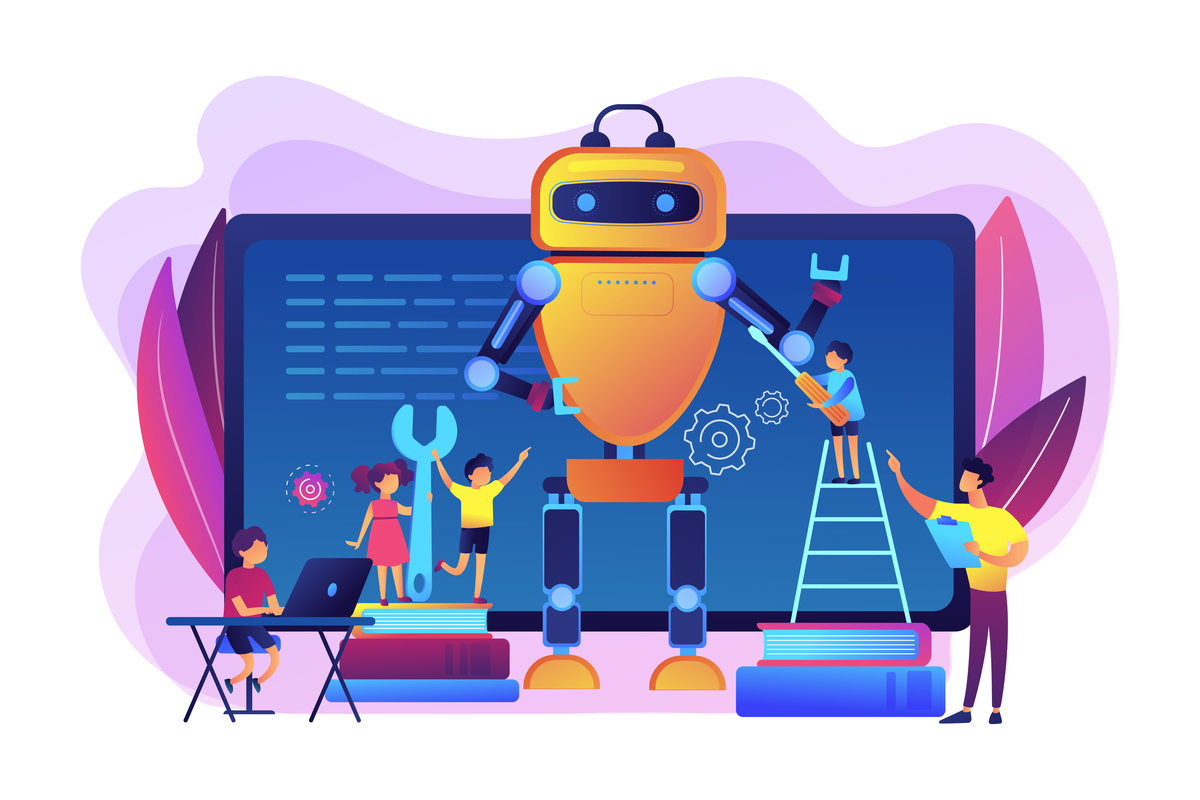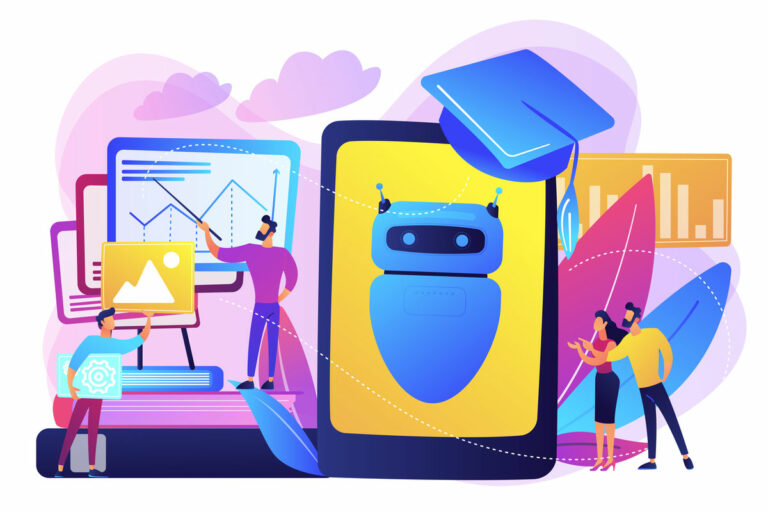AI is becoming a shaping force in education. Recent forecasts certainly suggest so. According to global market insights, the AI market will grow to $30 billion by 2030.
These numbers look increasingly plausible as more institutions continue to rely on AI and technology to streamline the learning process. Tutors are using AI to automate routine administrative tasks like grading and planning curriculums, while students rely on generative systems like ChatGPT for research.
Benefits of AI in education
Despite the moral conflict surrounding AI applications, there’s no denying it could robustly improve the learning process. Below are just a few benefits:
- Personalized learning: Adaptive learning suited to each student can make them less restricted by their weaknesses and quicken assimilation.
- Workload reduction: With the ability to grade abstract assessments and score multiple tests quickly, AI can spare academic staff some serious workload, leaving them to focus on more critical stuff.
- Course quality improvement: If a particular course has many students doing poorly, AI can identify issues with the course material and methods based on student feedback.
- Streamlined production: With AI software and applications, academics can regularly create engaging learning materials faster and easier.
Regarding ethics, AI and machine learning developers should assume responsibility when building their applications (e.g., restricting certain words and topics in ChatGPT).
But institutions will have a part to play as well. They should adopt systems to curb unethical use rather than avoid participating altogether.
Let’s discuss the most practical and innovative applications of AI in learning that schools should adopt.
5 Ways AI is Applied in Education
Grading Assessments

Already, multiple AI applications can read and grade assessments based on a predetermined grading scale.
These programs use technologies like natural language processing, speech analysis, and semantic analysis to process written prose.
Some, like Project Essay Grade, assess essays based on multiple measurement factors, e.g., diction, fluency, construction, etc., and can get results nearly identical to a human assessment.
Another example, AI Grader by Copyleaks, claims to be able to quickly score thousands of standardized tests “at the state, national, and university-wide level” without error or bias. The software also promises an optical feature that can grade physical tests.
Most AI grading software collects data from human-graded papers and then uses this data to imitate human grading on subsequent assessments.
Other typical features include immediate automatic student feedback, multi-language grading, and peer review interactions. Some can even detect off-topic responses.
Automating Administrative Tasks

Some AI tools can automate a handful of manual administrative tasks in schools, colleges, and universities. Such tasks include:
- Scheduling and rescheduling classes
- Sending report cards to parents
- Sharing forms, enrollments, and other correspondence with appropriate personnel and departments.
- Creating and sharing mail
- Marking attendance
- Record keeping
One such tool is Ivy Quantum. Like many tools in this category, it acts as a conversational chatbot that guides students and curious individuals through enrollments, application processes, scholarships, and more.
The tool is typically Integrated with a university’s website and can be applied across multiple departments. It deploys chatbots that can be specialized based on each department’s knowledge base. It can also automate mail, phone calls, or SMS.
Tools like this will help administrators organize and communicate en masse. They can help more students, reduce manual errors, and save time.
Personalized Learning

Studying just got easier and more productive for everyone.
With AI tools that can create tailor-made schedules, provide personalized prompts, and operate based on adaptive feedback, students can grasp concepts at their speed and build a solid foundation of learning.
If there are topics a particular student finds difficult, such tools can provide targeted practice videos or engaging learning prompts to help them understand. The system then adjusts as they pass each difficulty stage.
Professionals can also rely on specific tools for personalized career growth. Such platforms provide a path of tailored career courses, a streamlined alternative to enrolling on multiple online learning platforms.
Examples of personalized learning AI tools include Cognii. Designed for K-12 schools, universities, and even corporate training, the tool operates as a virtual learning assistant. This assistant provides one-on-one tutoring and personalized feedback in real time through a conversational interface.
Another example is Knowji, an audio-visual application that helps improve language vocabulary.
The app uses a spacing repetition algorithm to predict when new language learners will likely forget a new word. It then tries to improve memory retention with customized learning modes and imagery.
Teaching Assistance

There are AI teaching tools designed to make life easier for tutors. Such applications can generate timetables, create engaging lesson content, craft newsletters, and write emails.
A good example is Fetchy. Perfect for elementary to high school tutors, the app provides engaging science experiments and can even create lesson frameworks.
Another tool, To-Teach, offers ready-to-use worksheets and customized lesson exercises.
Engaging Learning

With AI, learning could be anything but boring. AI-powered content and gamification can make even the most complex subjects intellectually stimulating and enjoyable.
Some game-based learning platforms, like Kahoot!, can host live games and create quizzes for any topic.
Others can quickly create visually engaging content personalized to students’ preferences and experiences. One such example is Storybooks, used to create illustrated stories for children in seconds.
Will AI replace teachers?
AI may eventually replace some administrative jobs or tasks in the academics. But learning is a fundamentally human activity. AI can’t inspire students the way teachers do. Nor can it psychologically motivate their creativity or provide genuine social feedback.
At the end of the day, institutions and teachers should embrace AI as a means to an end—a highly advanced work tool equipped to make their lives easier, rather than a threat.
There’s already growing acceptance of AI among schools, with universities in Wisconsin and the United States in general offering artificial intelligence courses.



